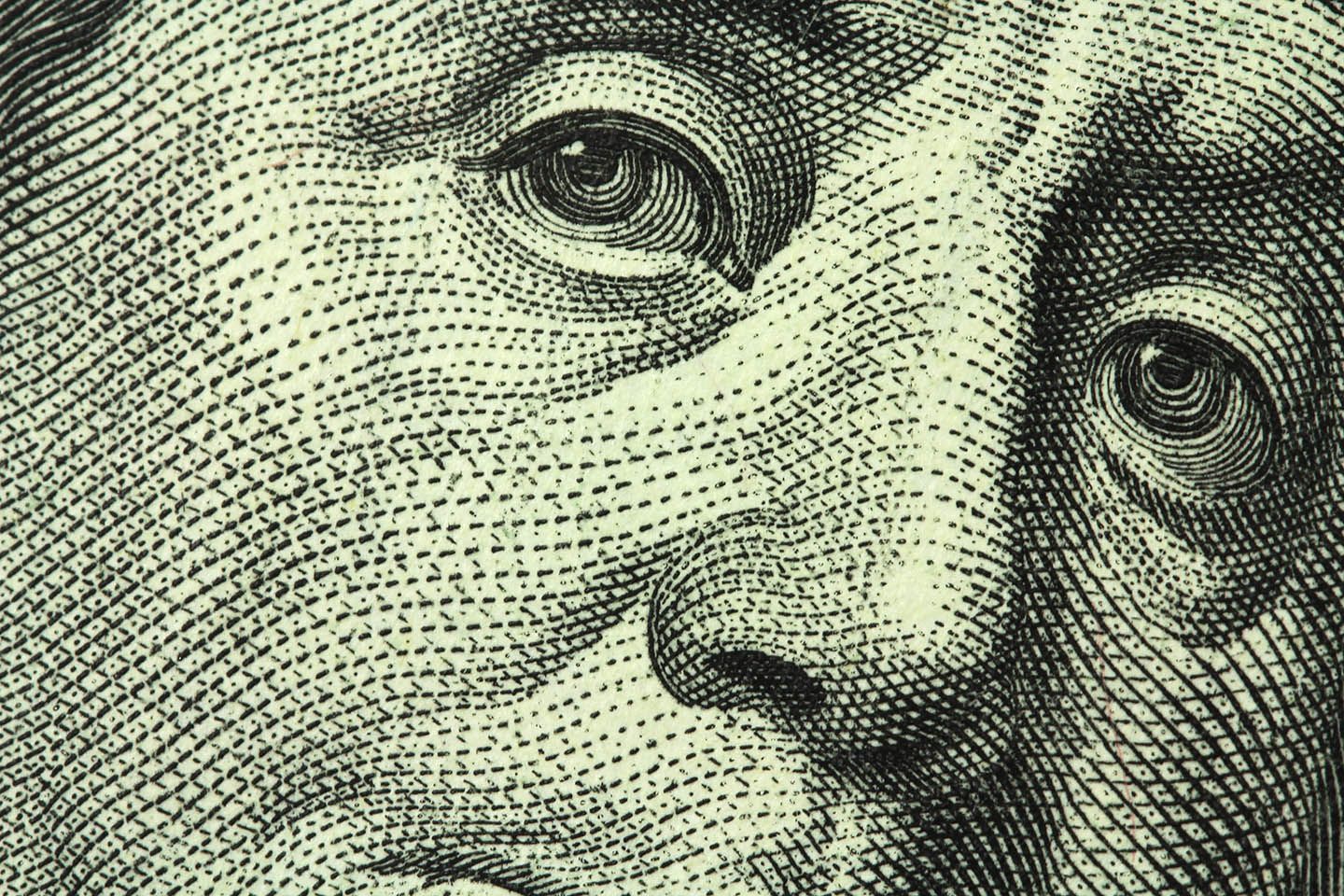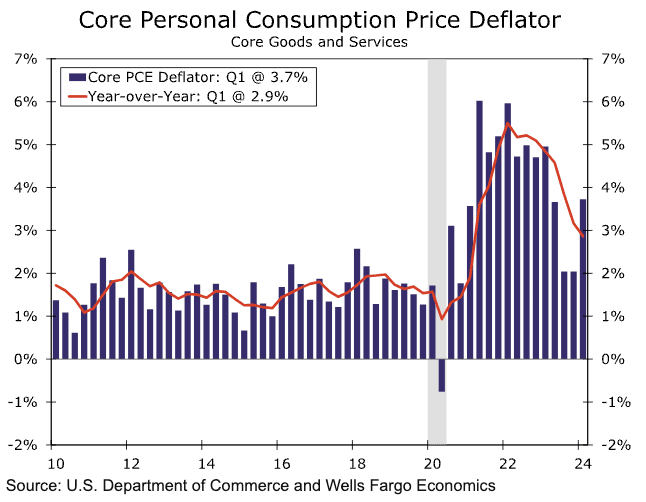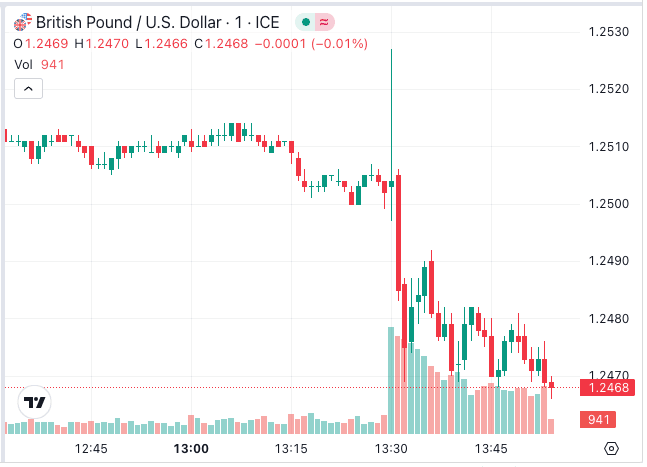Dollar Jumps After PCE Data Shows Consumer Spending is Surging
- Written by: Gary Howes
-

Image © Adobe Images
The Dollar recovered in a convincing fashion after a measure of consumer spending saw above-consensus growth in the first quarter of 2024.
The Pound to Dollar exchange rate dropped following news the core PCE price deflator came in at 3.7% q/q annualised, three ticks above expectations.
The PCE price deflator is contained in the U.S. quarterly GDP report and is simply a measure of consumer spending. The above consensus reading points to strong demand-led inflationary pressures and raises expectations that the Federal Reserve had little choice but to leave interest rates unchanged for an extended period.
Pound-Dollar had reached above the 1.25 handle earlier in the day amidst a technical retracement of April's losses but has since fallen back to 1.2469 and looks set to register further weakness.
Live GBP/USD Money Transfer Exchange Rate Checker | ||
Live Market Rate: | get quick quote | |
Corpay: | ||
Banks: Median Low | ||
Banks: Median High | ||
These data are based on the spread surveyed in a recent survey conducted for Pound Sterling Live by The Money Cloud. | ||
Ali Jaffery, an economist at CIBC Markets, says the PCE price deflator saw a material acceleration from the Q4 pace of 2.0%. It verifies evidence in other inflation surveys that point to accelerating inflationary trends.
"Slower inflation progress will be more of a concern with core inflation coming in higher than expected. The Fed will need to see both the economy sustainably cooling and price pressures abating to feel confident in easing policy," says Jaffery.
"Consumer spending in the service sector is not slowing, in fact, it is ramping up at a rate seldom seen in the past 20 years. That is problematic as core PCE prices are picking up again in defiance of higher rates," says Tim Quinlan, Senior Economist at Wells Fargo Economics.
The headline GDP print was softer than markets were expecting at 1.6% q/q annualised, well below the 2.5% consensus expectation and last quarter’s 3.4% increase.
This could limit the Dollar's advance somewhat as economists say inflationary pressures will ultimately turn lower in response to a slowing economy, which CIBC expects to be the case by September.
Above: GBP/USD at one-minute intervals showing the reaction following the data release.
The Pound could defend its recent lows against the Dollar owing to a recent speech by Bank of England Governor Huw Pill and some stronger-than-expected UK PMI figures for April.
The PMIs showed the UK economic recovery accelerated in April while Pill said not much has changed in terms of the UK interest rate outlook as he was not yet convinced inflation was on course to fall to 2.0% on a sustained basis.
Track GBP/USD with your own custom rate alerts. Set Up Here
To be sure, technical studies suggest the Pound is still poised for further weakness against the Dollar, and we view the current gains as being technically driven as opposed to the start of a fundamental uptrend.
For the fundamental picture to shift in favour of sustained gains by the Pound against the Dollar, we need to see the Federal Reserve make a clear commitment to cutting interest rates.
But for this to happen, the major U.S. data prints (inflation, employment) must soften. The next releases are only due in May.





